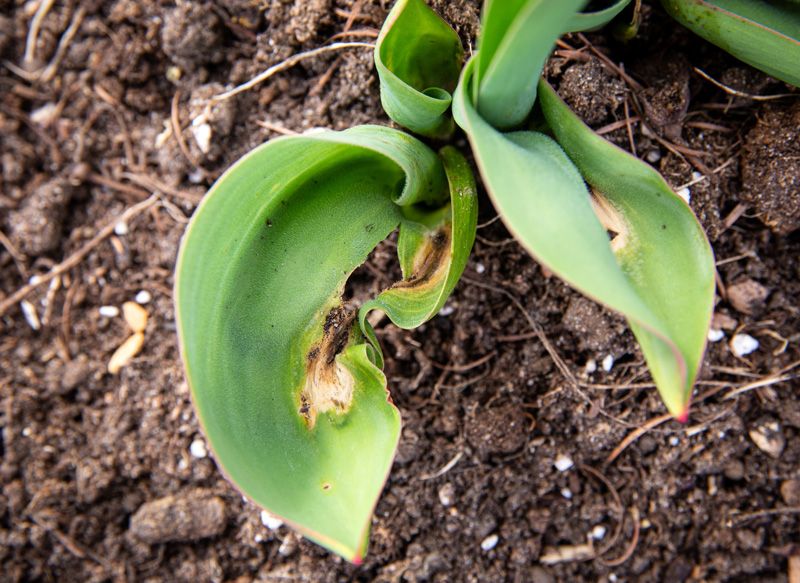
Tulip Fire
Tulip fire
Common name
Tulip fire
Causal agent
Tulip fire is a fungal disease caused by a pathogen belonging to the genus Botrytis. The infected bulb and flowers look burnt, thus called ‘firehead.’
Scientific name
Botrytis tulipae
Symptoms & Signs
Tulip fire is identified through brown necrotic, sunken lesions on the leaves and bulbs. As the disease progresses, the lesions spread throughout the plant, resulting in withering. It weakens the stems, due to which the flowers collapse. Disfigured, mottled shoots and leaves give the disease a characteristic appearance. The bulbs stems, and leaves also have grayish-black spores that transmit the disease.
Transmission
The air-borne spores spread through wind, water, insects, and infected tools to other healthy plants and spread the disease. Planting infected bulbs can also spread the infection since the fungal structure sclerotia can survive for up to 3 years on bulbs and soil.
Time of concern
Late winter to summer
Common hosts
Tulips
